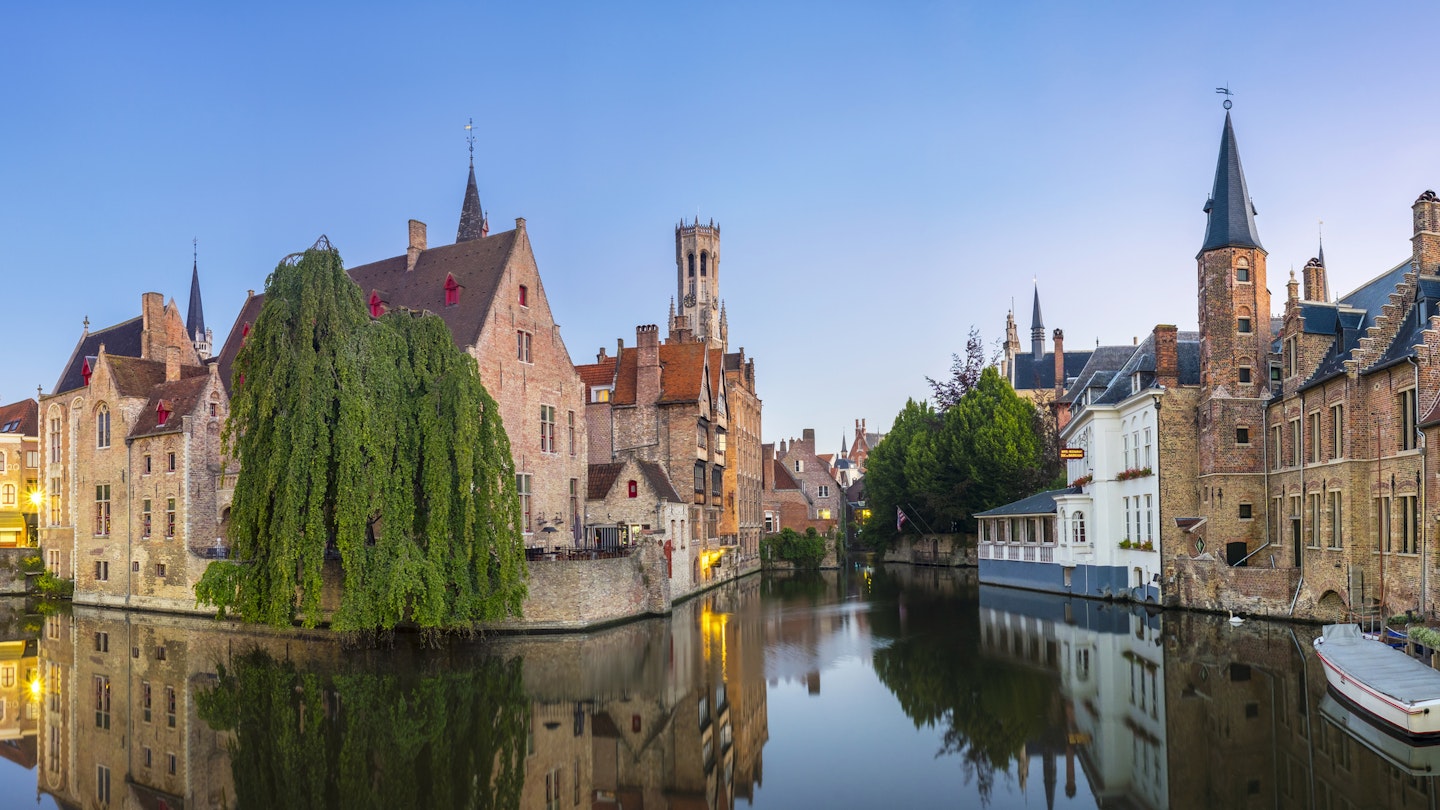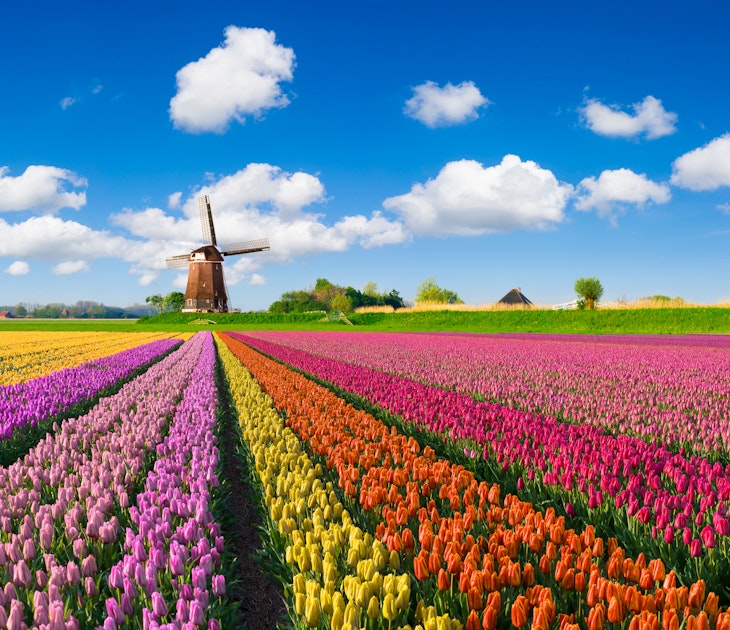
10 money-saving tips for budget travelers in Belgium

May 22, 2024 โข 6 min read

From street food to cheap places to stay, here's how to see Belgium on a budget ยฉ Jason Langley / Aurora Photos / Getty Images
Nicely nestled at the crossroads of Western Europe, Belgium overflows with museums, castles, designer stores and gastronomic restaurants.
The country is known to be expensive, but fear not. From delicious street food to lively breweries and pubs, affordable train passes and free museums, you can experience the best of Belgium without breaking the bank. Here are our top money-saving tips, along with a guide to daily costs.

Daily costs in Belgium
Hostel room: โฌ35โ120 per night
Basic room for two: โฌ75โ175 per night
Self-catering apartment (including Airbnb): starting from โฌ85 per night
Public transport ticket: โฌ2.50
Coffee: โฌ3โ5
Sandwich: โฌ6โ11
Dinner for two: โฌ75โ150
Beer/pint at the bar: โฌ4โ8
Belgian waffle: โฌ2โ5
Belgian fries: โฌ3โ5
Ready to plan your trip? Here are Belgium's best places to visit
1. Travel in the offseason
In Belgium, the high season is between July and August. It can also stretch from April to September if you're planning a seaside visit. Christmas markets are increasingly popular, adding to the peak season during the holidays.
Offseason, flights and accommodations will be less expensive and international trains less crowded. Belgian weather is notoriously fickle and rainy so, if youโd like a good chance of clement weather and lower prices, consider visiting during shoulder season (March to May and September to October).

2. Most cities are walkable
One of Belgium's greatest assets is its compact cities, easily explored on foot. They are either small, like Bruges or , or have their main attractions concentrated in specific areas, like Brussels.
Generally speaking, you won't need to use public transport, and you can save taxi rides for those evenings when night buses don't run (Sunday to Thursday).
Public transportation charges could cost you around โฌ10 per day (if not more), so save your euros and soak up the urban atmosphere and admire the architecture as you stroll.
3. Beer is very reasonably priced
Belgium is a land of beer, from rich Trappist ales to sour gueuzes, so it's no wonder it's surprisingly affordable. A basic 25cl beer starts at โฌ2.80 on tap (roughly the price of a soft drink), while special 33cl bottled beers go from โฌ4.50.
Dive right into Belgian culture and indulge by pairing your food with a beer (for example, at the casual in Brussels). Or try it at the source by visiting a microbrewery's taproom, such as the in Antwerp.

4. Make the most of street food and markets
Thankfully for your wallet, Belgium is replete with street food stalls. Street vendors are lifesavers in a country renowned for expensive restaurants (expect to pay over โฌ50 for a one-person meal).
Grab a steaming cone of fries for about โฌ4.50 with sauce, or, if you're really hungry, a mitraillette (a half baguette filled with fries, skewered or fried meat, or falafel).
For a sweet treat, stop at a ณขพฑรจฒตฑ๐ waffle stand. This denser, caramelised waffle needs no toppings and can be eaten on the go. Markets, in addition to selling fruits and vegetables, increasingly host stalls where you can enjoy great food on a budget.
The in Brussels is one of the most famous. And if you like fish and seafood, head to for the freshest grey shrimp in Belgium.
5. Feast at lunch time
We all love treating ourselves to a good restaurant when on vacation, and there's a hack to keep your budget on track โ prioritize lunch over dinner. Many restaurants offer daily or weekly set menus at lunchtime that can be half the price of the dinner menu.
In Ghent, for instance, the modern gastronomy restaurant offers a lunchtime menu for โฌ38, while the four-course evening meal costs โฌ65. Remember to check opening hours and book a spot in advance.
6. Travel on the cheap by train
Belgium boasts an extensive railway network linking all major and mid-sized cities seamlessly. The system is reliable (although sometimes late), efficient and comfortable. Tickets can be purchased online, at stations or via automated machines โ no advance booking is necessary.
If you're visiting multiple cities during your stay, offers a transferable 10-trip pass called "Multi." The Standard version costs โฌ102, with a discounted price of โฌ99 if purchased on the . For travellers under 26, the "Multi Youth" pass costs โฌ62 and โฌ60 on the app. This pass is also valid for group travel.
If you're only visiting one or two cities, consider scheduling your trip for a weekend or public holiday when tickets are discounted by 50%.

7. Stay at hostels to save some cash
Since COVID-19, accommodation prices in Belgium skyrocketed (think at least โฌ150 a night in Brussels), including in Airbnbs and hostels. But, apart from couchsurfing, hostels are still the cheapest option for a budget night's sleep.
A bed in a dorm in city centers will set you back between โฌ35 and โฌ75. Individual rooms in hostels used to be a good deal, but they're now priced similarly to hotel rooms.
Belgium has a little peculiarity in larger cities (Brussels, Antwerp, Ghent, or ณขพฑรจฒตฑ๐) as hotel prices slightly drop during the weekend, especially on Sunday nights.
8. Browse flea markets for unique and budget-friendly finds
Budget-conscious travelers will have the time of their lives rummaging through Belgium's vibrant flea markets. They are a goldmine for those seeking something special beyond the usual souvenir shops: an Art Nouveau lamp, a Bruges lace handkerchief, original Tintin comic books, maybe some forgotten designer clothing at a fraction of the original price.
The thrill of the hunt is half the fun. In Brusselsโ popular Marolles neighborhood, the flea-market on Place du Jeu-de-Balle takes place every morning.
In Ghent, the Vrijdagmarkt is open every Friday, and offers a mix of everything, from fresh produce and flowers to vintage finds and handcrafted goods. Belgiumโs oldest market, the in ณขพฑรจฒตฑ๐, also has a flea market section and is open every Sunday.
9. Make use of self-guided tours
Thanks to tourism officesโ efforts, there are tons of free self-guided tours you can follow, not only about the main sights to see (in , for instance) but also themed tours such as Brusselsโ famous , or Mechelenโs "", a free audio guide dedicated the city's carillon heritage.
Want more? The free app has gamified walks (scavenger hunts!) with dozens of routes, mainly in Brussels and Wallonia. These routes cover a wide range of subjects, from following the Brontรซ sisters' lives in Brussels to exploring Namur's citadel or Charleroi's industrial heritage.
Totemus uses riddles and quizzes based on your surroundings to guide you to the next step and, ultimately, the prized totem at the end of the hunt.
10. Visit museums for free
Visiting museums can be expensive, with ticket prices reaching โฌ20. Luckily, there are ways to save. First, take advantage of free museums. If you're interested in learning how the EU works, the Parlamentarium and the House of European History are free of charge.
More of an art buff? Then the Musรฉe Antoine Wiertz and (both part of the Brussels Fine Arts Museums) won't cost you a thing.
In Brussels and Wallonia, most museums are free on the first Sunday of the month. Unfortunately, Flanders has done away with this practice.
If you plan on visiting three or more museums, a could be a great deal. For โฌ59, it gives you access to 235 museums across the country.
Explore related stories



 Shopping10 Brussels experiences that cost next to nothing โ or are flat-out free
Shopping10 Brussels experiences that cost next to nothing โ or are flat-out freeAug 26, 2024 โข 6 min read
 Destination PracticalitiesA first-time guide to Luxembourg: plan your visit to this tiny nation
Destination PracticalitiesA first-time guide to Luxembourg: plan your visit to this tiny nationJul 31, 2024 โข 7 min read


 Destination PracticalitiesEverything you need to know about getting around Belgium
Destination PracticalitiesEverything you need to know about getting around BelgiumJun 12, 2024 โข 6 min read
 Sustainable TravelAboard the sleeper train connecting Brussels and Berlin
Sustainable TravelAboard the sleeper train connecting Brussels and BerlinJun 11, 2024 โข 4 min read

